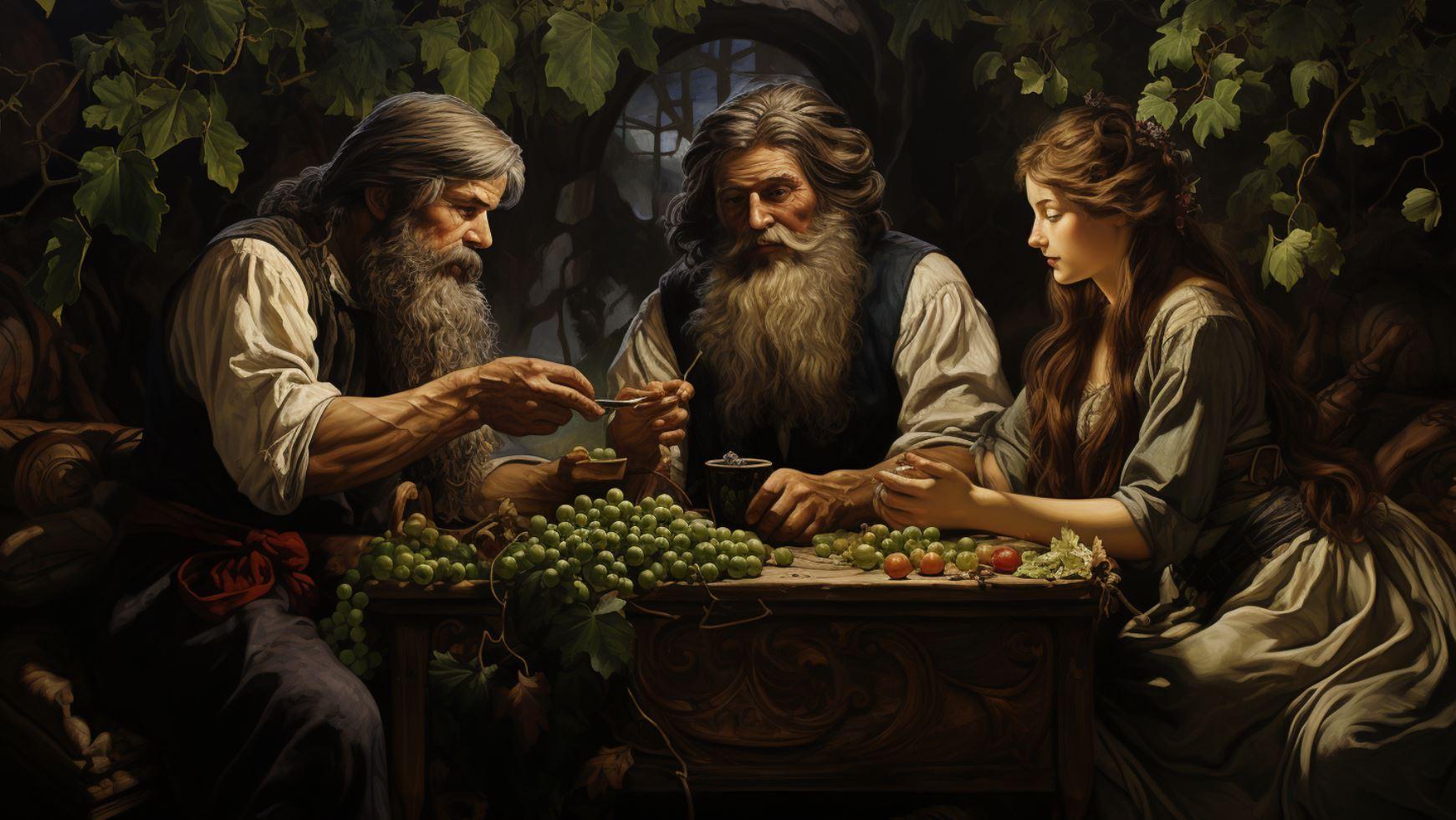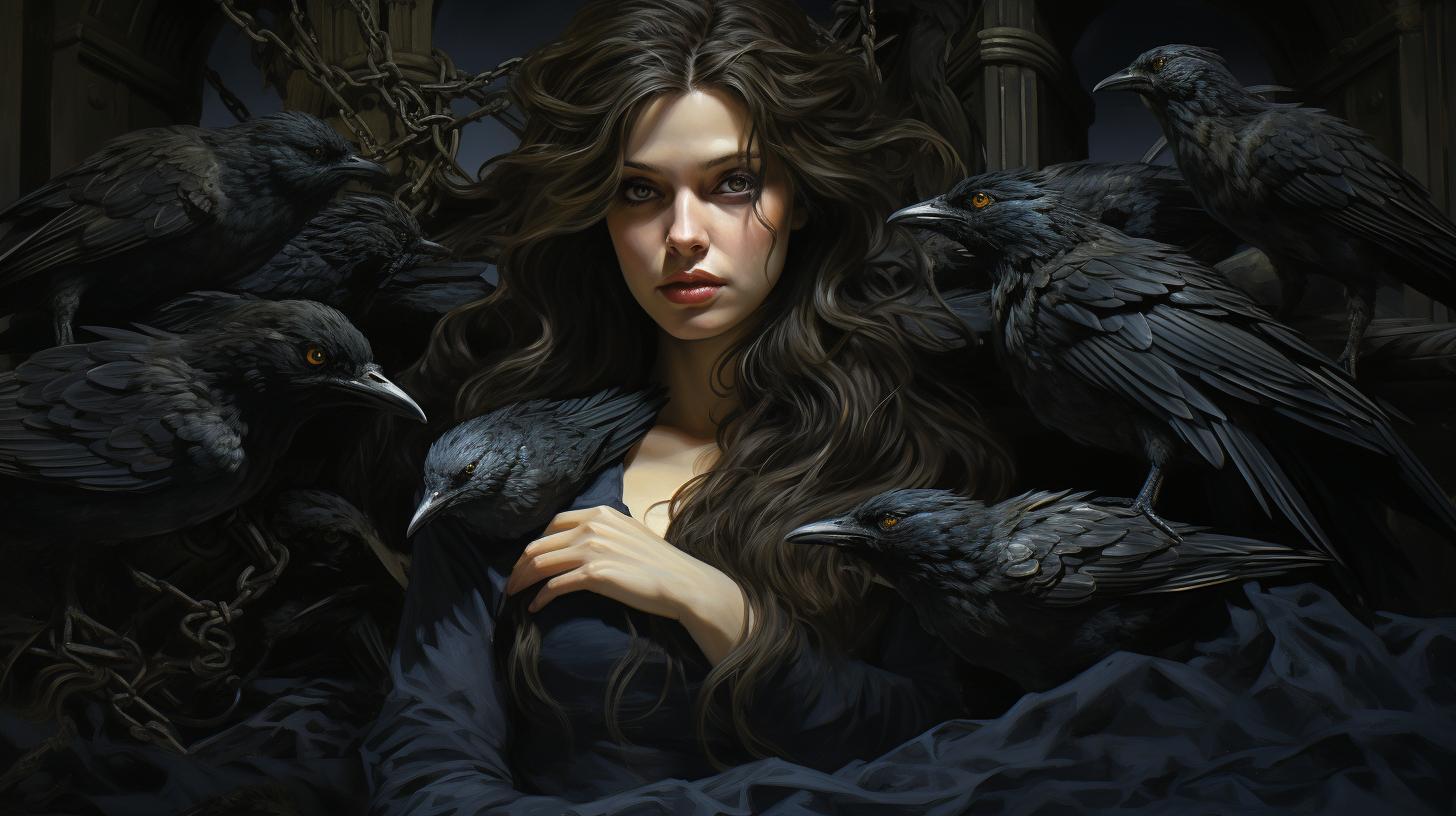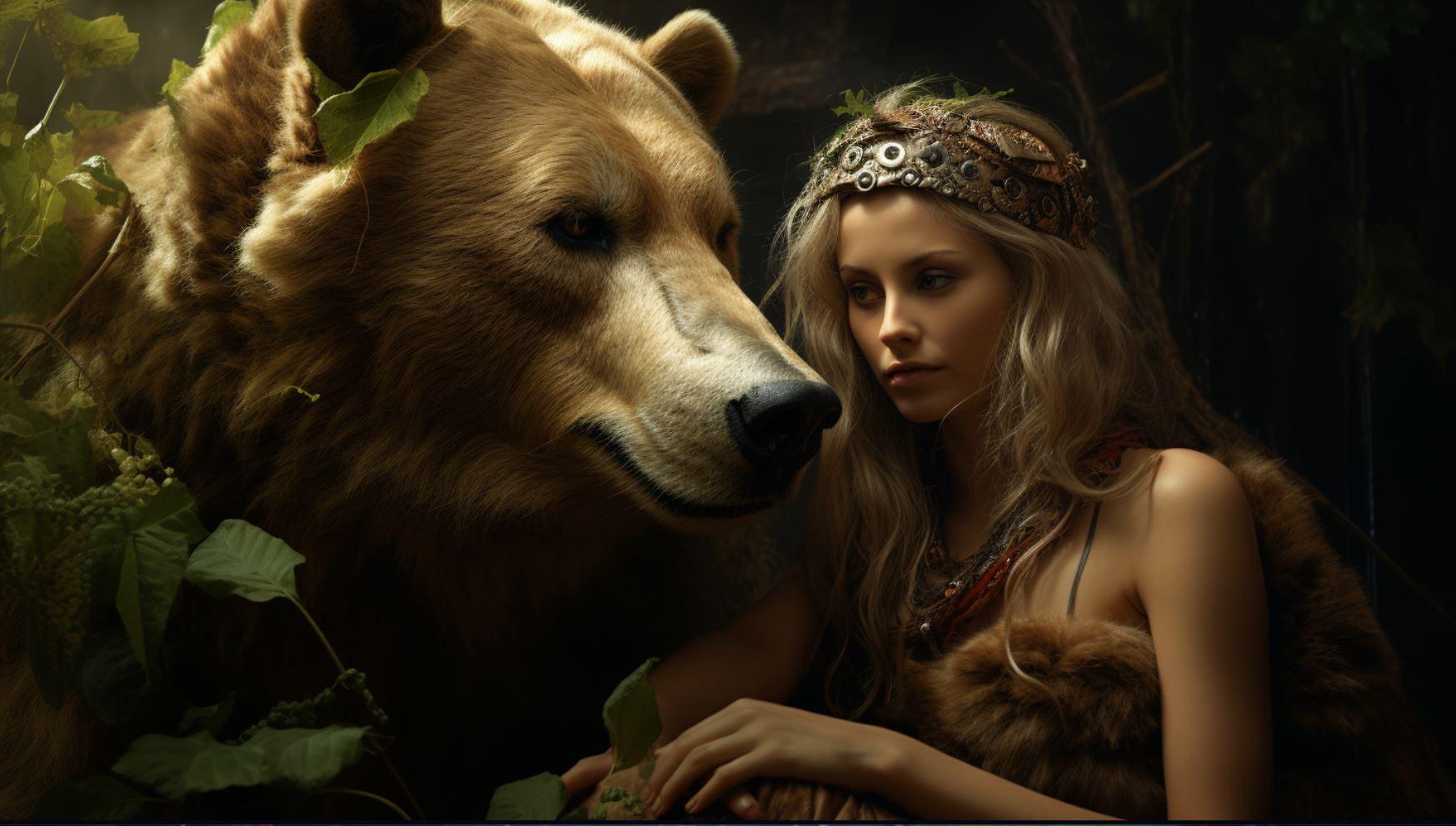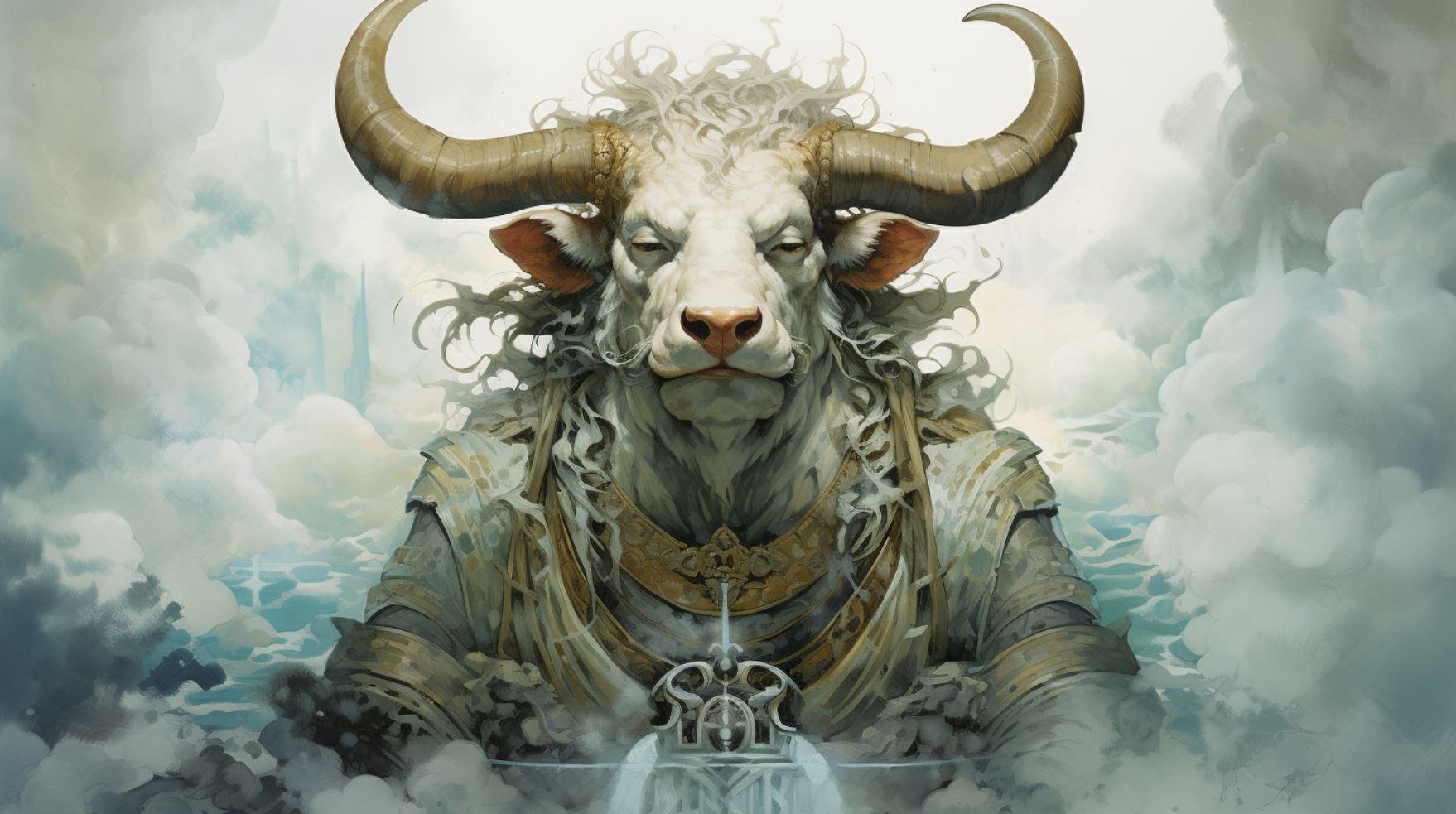Celtic Gods and Goddesses: Unveiling the Mysteries of Ireland’s Mythology
The Mythology of the Tuatha Dé Danann reveals a captivating world of Celtic gods and goddesses. From the powerful Morrigan, the deity of war, to Brigid, the triple goddess of fire, healing, and poetry, each figure holds a unique role in Celtic mythology.
Discover Lugh, the multiskilled god, and Dagda, the wise god of fertility and wisdom. Explore Rhiannon, the goddess of fertility and communication, as well as Cernunnos, the horned god associated with the wild.
Eriu, the goddess of Ireland and sovereignty, and Aine, the goddess of love, summer, and wealth, are also part of this enchanting pantheon.
List of all the Celtic Gods and Goddesses
The Mythology of the Tuatha Dé Danann
Beneath the mystical world of Celtic gods and goddesses lies the captivating mythology of the Tuatha Dé Danann. This ancient pantheon of deities holds great significance in Celtic folklore, with each deity carrying their own unique roles and powers.
The Deities of the Tuatha Dé Danann
At the heart of the Tuatha Dé Danann mythology are a fascinating array of gods and goddesses. From the mysterious Morrigan, the goddess of war, to the triple goddess Brigid, associated with fire, healing, and poetry, each deity embodies different aspects of life and the natural world.
Danu, the Mother Goddess of the Tuatha Dé Danann
Among the prominent figures is Danu, revered as the mother goddess of the Tuatha Dé Danann. She holds a deep connection with nature, regeneration, wisdom, and prosperity. It is said that Danu passed down her wisdom and talents to members of her divine clan.
Immerse yourself in the ancient tales that follow these enchanting deities as we dive deeper into their stories and uncover the rich mythology of the Tuatha Dé Danann.
Morrigan: The Celtic Goddess of War
Morrigan, a prominent figure in Celtic mythology, is revered as the fearsome goddess of war. Her enigmatic presence often manifests as a trio of sisters or a singular entity. Represented by the mystical symbol of a crow, she possesses the power to foretell victory or doom in battle.
Morrigan‘s influence extends beyond warfare; she also embodies sovereignty, prophecy, and fate.
As the Celtic goddess of war, Morrigan holds immense significance in the ancient Irish tales. She intertwines with the cycle of Ulster, playing a crucial role in guiding and testing the noble heroes.
With unyielding determination, she influences the outcome of conflicts and drives warriors into glorious triumph or devastating defeat.
Morrigan‘s portrayal resonates with the wrath and strength associated with battle, making her an iconic symbol of Celtic power and resilience. Her complex nature and divine essence continue to captivate and inspire appreciation for the intricate tapestry of Celtic mythology and its divine personalities.
Brigid: The Triple Celtic Goddess of Fire, Healing, and Poetry
Brigid, often referred to as the Triple Goddess, holds a prominent place in Celtic mythology. She embodies the sacred powers of fire, healing, and poetry, captivating both the mortal and divine realms.
As a patroness of fire, Brigid represents the transformative energy that ignites inspiration and creativity.
Her healing abilities are renowned, providing solace and restoration to those in need. Brigid‘s gentle touch brings forth physical and spiritual healing, offering comfort and guidance along life’s journey.
Poetry, in all its captivating forms, finds its muse in Brigid. She inspires bards and poets, whispering words that paint vivid pictures and evoke powerful emotions. Through her divine influence, the world of poetry flourishes, carrying the essence of Celtic culture and wisdom.
Brigid‘s triple aspect reflects her multifaceted nature. She embodies the maiden, the mother, and the crone, signifying her connections to the cycle of life, growth, and transformation. Her triple presence encapsulates the diverse aspects of femininity and the inherent strength that lies within.
As we delve into the realm of Celtic gods and goddesses, Brigid shines with her divine radiance, illuminating the path of fire, healing, and poetry.
Lugh: The Multiskilled Celtic God
Lugh, a central figure in Celtic mythology, is revered as a versatile and skillful deity. Known as the master of many arts, he encompasses various domains and talents. Not only is Lugh a renowned warrior and king, but he also possesses remarkable craftsmanship.
His mastery in wielding the spear is legendary, matched only by his proficiency in numerous other disciplines.
As a god of high distinction, Lugh exemplifies intelligence, creativity, and leadership. His expertise extends beyond warfare and craftsmanship, embracing music, poetry, and storytelling. Lugh‘s multifaceted nature embodies the dynamism and richness of Celtic culture and spirituality.
His presence brings inspiration to warriors, artists, and intellectuals alike.
Admired for his unparalleled skills and wisdom, Lugh stands as a role model and patron for those seeking excellence in multiple domains. His multifunctional nature highlights the interconnectedness of various aspects in Celtic tradition.
From combat prowess to artistic achievements, Lugh encapsulates the multifaceted essence of Celtic gods.
Dagda: The Good Celtic God of Fertility and Wisdom
Dagda, known as the Good God, is a prominent figure in Celtic mythology and a central deity among the Tuatha Dé Danann. Revered for his wisdom, fertility, and strength, Dagda is depicted as a giant with a welcoming, bearded face.
He holds a magical cauldron that never runs empty and a club that can both harm and heal.
As the god of agriculture and abundance, Dagda ensures the prosperity of the land and its people. With his immense strength, he tilled the earth, allowing crops to flourish and cattle to prosper.
His wisdom extends beyond the physical realm, as he possesses great magical and poetic skills, symbolizing the link between the mortal and divine worlds.
Dagda also embodies the nurturing archetype, often described as a father figure to his fellow deities and the mortal population. His cauldron, known as the Cauldron of Plenty, provides sustenance to all who approach it with a pure heart, embodying the generous nature of the god.
Additionally, Dagda possesses the power to manipulate time itself, exemplified by his ability to control the seasons. This control over nature emphasizes his role in fertility and the cyclical nature of life.
With his multifaceted abilities and benevolent nature, Dagda represents the harmonious interconnectedness between the divine, the natural world, and humanity, making him a revered figure in Celtic mythology.
Rhiannon: The Celtic Goddess of Fertility and Communication
Rhiannon, a prominent figure in Celtic mythology, is revered as the goddess of fertility, communication, and leadership. Her name, which means “Great Queen,” aptly represents her influential role within the pantheon of Celtic gods and goddesses.
As the goddess of fertility, Rhiannon symbolizes the abundant life force that flows through the land. She is associated with the cycle of birth, growth, and harvest, providing nourishment and sustenance to the people.
Further, Rhiannon possesses the power to bestow prosperity and abundance upon those who honor her.
In addition to her fertility aspect, Rhiannon is celebrated as the goddess of communication. She holds the ability to bridge realms and facilitate the exchange of messages between mortals and the divine.
Rhiannon exemplifies eloquence, persuasive speech, and song, making her a patroness of poets, bards, and orators.
Furthermore, Rhiannon assumes the role of a leader among the Celtic deities. Her wise counsel and guidance signal her authority and charisma. Rhiannon represents a model of effective governance and demonstrates the qualities necessary for successful leadership.
Through her association with fertility, communication, and leadership, Rhiannon embodies the essence of divine femininity in Celtic mythology. Her multifaceted nature endears her to both mortals and fellow deities, ensuring her enduring place in the captivating tapestry of Celtic gods and goddesses.
Cernunnos: The Horned Celtic God of the Wild
Cernunnos, also known as the Cornudo, is a captivating figure in Celtic mythology. As the god of the wild, he embodies the untamed forces of nature. Often depicted with majestic antlers on his head, Cernunnos symbolizes the vitality and primal energy of the wilderness.
In Celtic art, he is frequently portrayed alongside animals such as stags, dogs, bulls, and horned serpents, further emphasizing his connection to the natural world. These animals represent his domain and serve as reminders of the wild and instinctual aspects of life.
Cernunnos is associated with fertility, abundance, and the power of transformation. He is seen as a guide between realms, bridging the gap between the physical and spiritual realms. His presence brings a sense of awe and reverence for the mysteries of nature.
The worship of Cernunnos highlights the importance the Celts placed on maintaining a harmonious relationship with the environment. It served as a reminder to honor and respect the untamed beauty of the wild, acknowledging the interconnectedness of all living things.
- Symbolizes the untamed forces of nature
- Depicted with majestic antlers
- Associated with stags, dogs, bulls, and horned serpents
- Represents fertility, abundance, and transformation
- Serves as a guide between realms
- Emphasizes the importance of harmonious relationship with the environment
Eriu: The Celtic Goddess of Ireland and Sovereignty
Eriu, a prominent figure in Celtic mythology, is revered as the goddess of Ireland and sovereignty.
Her presence symbolizes the fertile lands of the Emerald Isle and the prosperity that it holds. As one of the Tuatha Dé Danann, Eriu stands as a testament to the deep spiritual connection the Celts had with their homeland.
Often associated with abundance and bountiful harvests, Eriu personifies the abundance of the Irish land and its natural resources. She embodies the sovereignty of Ireland, representing the divine authority that governed the land and its people.
Legends describe Eriu as a majestic and graceful goddess, radiating power and wisdom. She was instrumental in the success of the Tuatha Dé Danann, ensuring their rule and protection over Ireland for centuries.
Today, Eriu‘s legacy lives on as she remains a symbol of Irish identity, representing the deep connection between the land and its people. Her presence continues to inspire reverence and respect, reminding us of the rich mythology and ancient traditions that shape Ireland’s cultural heritage.
Aine: The Celtic Goddess of Love, Summer, and Wealth
Aine, a prominent figure in Celtic mythology, is revered as the goddess of love, summer, and wealth. Her influence extends to various aspects of life, symbolizing the joys and abundance associated with these domains.
As a deity of love, Aine embodies passion, desire, and connection, nurturing relationships and fostering intimate bonds. She is often associated with the summer season, representing its warmth, vitality, and growth, infusing nature with vibrant energy during this time.
Moreover, Aine is linked to prosperity and wealth, symbolizing the bountiful harvests and material abundance that bring prosperity to her followers.
Her presence during festivals and celebrations is believed to bring luck and good fortune. Aine‘s profound influence is celebrated by the Celtic people, who honor her during summer solstice festivities, invoking her blessings for abundant harvests, fruitful unions, and prosperous endeavors.
As the embodiment of love, summer, and wealth, Aine holds a special place in Celtic mythology, reminding us of the significance of these aspects in our lives and the interconnectedness of love, prosperity, and the natural world.
Aengus: The Celtic God of Youth and Love
Aengus, a prominent figure in Celtic mythology, is revered as the god of youth and love. Known for his exceptional beauty and cunning, Aengus captivates hearts with his enchanting presence.
As the son of the Dagda, the god of fertility and wisdom, Aengus inherits both strength and intellect.
In Celtic lore, Aengus is associated with passionate love and desire, igniting the flames of romance in the hearts of mortals. His gentle touch and soothing words bring solace and joy to those seeking true love.
Aengus holds the power to inspire and unite, guiding individuals towards deep connections and lasting relationships.
Wielding his magical harp, Aengus creates melodies that stir the soul and evoke intense emotions. With each strum of the strings, he weaves enchantments that melt the barriers of cynicism and cynicism and invite love to flourish.
As a deity of youth, Aengus embodies vitality and exuberance. His youthful energy and exuberance breathe life into the hearts of those who seek rejuvenation and renewal. With Aengus by their side, individuals are granted the strength to embrace new beginnings and the courage to chase their deepest desires.
Aengus, with his mythical presence and unwavering devotion, remains an eternal symbol of love and youth in Celtic folklore. His legacy resonates through the ages, reminding us of the enduring power of love and the eternal flame of passion that burns within.
Arawn: The Celtic God of Death and the Underworld
Celtic mythology introduces us to Arawn, a significant figure associated with death and the underworld. As the Celtic god of the Otherworld, Arawn reigns over Annwn, the realm of the dead.
Arawn‘s realm is a mysterious and solemn place, where the souls of the deceased reside. He holds dominion over the afterlife and guides departed souls on their journey. Known for his wisdom and depth of understanding, Arawn is revered as a compassionate guide who ensures a smooth transition for souls into the realm of the dead.
Apart from his role as the god of death, Arawn possesses other qualities that make him a complex deity. He is also associated with hunting and the natural world, symbolizing the cyclical nature of life and death.
This connection between the spiritual and earthly realms further showcases the depth of Arawn‘s significance in Celtic mythology.
Within the pantheon of Celtic gods and goddesses, Arawn occupies a vital role as an overseer of the afterlife and a guardian of the souls who pass from the mortal realm.
His presence embodies the enigmatic and profound aspect of Celtic beliefs surrounding death and the eternal journey beyond.
Epona: The Celtic Horse Goddess of Fertility and Protection
Epona, the Celtic Horse Goddess, holds a significant place in Celtic mythology as a symbol of fertility and protection. As the guardian of horses, she embodies the strength, grace, and power of these magnificent creatures.
Epona is often depicted riding a horse or surrounded by them, emphasizing her deep connection to these animals.
Her role extends beyond horse-related matters, as she is also associated with fertility and abundance. It is believed that Epona brings prosperity and blessings to those who honor and worship her.
Epona‘s protective nature extends not only to horses but also to her devotees, offering them guidance, courage, and support.
In Celtic culture, horses held immense importance as a means of transportation, companionship, and even in warfare. Epona‘s influence, therefore, permeated various aspects of life, offering assistance and blessings in both practical and spiritual matters.
The reverence for Epona as a goddess of fertility and protection showcases the Celtic belief in the interconnectedness of nature and the divine. Her presence brings a sense of harmony and prosperity to those who acknowledge her power.
As we delve into the rich tapestry of Celtic mythology, Epona emerges as a captivating figure, weaving together the realms of horses, fertility, and protection. Her unwavering presence continues to inspire and guide those who seek her blessings.
Cerridwen: The Celtic Goddess of Rebirth and Transformation
Cerridwen, one of the prominent Celtic goddesses, represents the essence of rebirth and transformation in Celtic mythology. Known as the goddess of inspiration and change, Cerridwen holds a significant place in the tales of the Tuatha Dé Danann.
Associated with the cycles of life and death, Cerridwen guides individuals through transformative journeys, allowing them to shed their old selves and emerge renewed. She symbolizes the continuous flow of energy and the power of regeneration.
- Symbolism: Cerridwen is often depicted as a wise crone, carrying a cauldron of wisdom and inspiration. Her ever-changing appearance mirrors the transformative nature of existence.
- Magical Brew: Cerridwen is renowned for brewing a potent concoction called “Awen,” which grants wisdom and poetic inspiration.This mystical elixir represents the transformative power of knowledge and creativity.
- Guiding the Seekers: Many seekers turn to Cerridwen for guidance during times of transition and personal growth. Her divine presence helps individuals navigate the challenges of change and embrace their inner transformations.
As the Celtic goddess of rebirth and transformation, Cerridwen’s mythical significance resonates deeply with those seeking personal evolution and spiritual awakening.
Her story serves as a reminder that change is a natural part of life and offers the opportunity for profound growth




